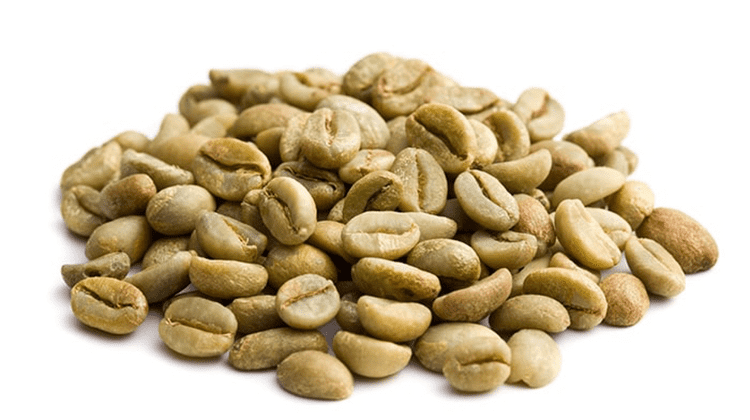BACKGROUND
Ingredient Type: Metabolite, Constituent
Also Known As: Coffea arabica caffeine

Caffeine is a bitter, white crystalline organic compound. It is a central nervous system stimulant, working by reversibly blocking the action of adenosine, which induces drowsiness. Caffeine is found in the seeds, nuts, or leaves of a number of plants native to South America and East Asia, most notably in the coffee bean.
Wild Coffea arabica plants grow between 9 and 12 m (30 and 39 ft) tall and have an open branching system with broad, glossy, dark green leaves. The plant produces a drupe (commonly called a “cherry”) that is bright red or purple when mature and typically contains two seeds (the coffee beans).
Endemic to the mountainous regions of Yemen and the southwestern highlands of Ethiopia, wild C. arabica is now rare in Ethiopia with most coffee plant populations in the country appearing to be of mixed native and planted trees. In Ethiopia, where it is called būna, it is commonly used as an understorey shrub. The species is widely naturalized in areas outside its native land in many parts of Africa, Latin America, Southeast Asia, China and the Caribbean (1).
Nearly all coffee that has been cultivated over the past few centuries originated with just a handful of wild plants from Ethiopia, and today the coffee growing on plantations around the world contains less than 1% of the diversity contained in the wild in Ethiopia alone (2).
According to legend, human cultivation of coffee began after goats in Ethiopia were seen mounting each other after eating the leaves and fruits of the coffee tree. In Ethiopia, people in some locales still drink a herbal tea made from the leaves of the coffee tree (2).
TRADITIONAL USES
Caffeine from coffee bean is used in health supplements today to help boost energy and help relieve pain.
Orally it is used for short-term relief of mental and physical fatigue, and to increase performance capabilities and mental alertness. It is also used orally to prevent Parkinson’s disease, symptomatic gallstone disease, type 2 diabetes, gastrointestinal cancer, lung cancer, and breast cancer. Other uses include to relieve headache, hypotension, weight loss, and attention deficit-hyperactivity disorder (ADHD).
WHAT DOES SCIENCE TELL US?
Caffeine Might Increase Mental Alertness:
Consumption of coffee and other caffeinated beverages seems to prevent a decline in alertness and cognitive capacity when consumed throughout the day (3). Caffeine can improve mental performance and alertness following prolonged sleep deprivation (4). Combining caffeine with glucose as an “energy drink” seems to improve mental performance better than placebo or either caffeine or glucose alone (5).
Caffeine Possibly Helps Cognitive Function:
There is preliminary evidence that suggests that higher lifetime coffee consumption might positively affect cognitive function among elderly women aged 80 or more years (6).
SAFETY
The typical dose of caffeine for a headache or restoring mental alertness is up to 250mg/day, about 2 cups of coffee (7). The current scientific literature suggest that <400mg/day is not associated with overt, adverse effects in healthy adults (8). It is possibly unsafe when used at at these doses in children, at higher doses, or for long periods of time (9).
Interactions:
Major
- Ephedrine
Moderate
- Adenosine, Alcohol, Flosamax, Anticoagulant and antiplatelet drugs, Beta-adrenergic agonists, Clozaril, Persantine, Antabuse, Estrogens, Luvox, Levothyroxine, Lithium, Monoamine oxidase inhibitors, Pentobarbital, Phenothiazines, Phenylpropanolamine, Quinolone Antibiotics, Rilutek, Stimulant drugs, Verapamil
- Possible interactions with certain supplements like Bitter orange, Caffeine-containing herbs, and Ephedra (Ma Huang)
Side-Effects:
- Caffeine has been reported to cause insomnia, nervousness, restlessness, gastric irritation, nausea, abnormal rapid heart rate, tremors, headache, irregular heartbeat, dizziness, diarrhea, and irritability. These side-effects are especially common in caffeine-sensitive individuals or when caffeine is administered in high doses (9).
REFERENCES
- Silvarolla MB, Mazzafera P, Fazuoli LC. (2004). Plant biochemistry: A naturally decaffeinated arabica coffee. Nature. 2004;429(6994):826.
- Davis AP, Gole TW, Baena S, Moat J. The impact of climate change on indigenous arabica coffee (Coffea arabica): predicting future trends and identifying priorities. PLoS ONE. 2012;7(11):e47981. doi:10.1371/journal.pone.0047981.
- Durlach PJ. The effects of a low dose of caffeine on cognitive performance. Psychopharmacology (Berl). 1998;140:116-119.
- Kamimori GH, Penetar DM, Headley DB, et al. Effect of three caffeine doses on plasma catecholamines and alertness during prolonged wakefulness. Eur J Clin Pharmacol. 2000;56:537-544.
- Scholey AB and Kennedy DO. Cognitive and physiological effects of an “energy drink:” an evaluation of the whole drink and of glucose, caffeine and herbal flavouring fractions. Psychopharmacology (Berl). 2004;176:320-330.
- Johnson-Kozlow M, Kritz-Silverstein D, Barrett-Connor E, et al. Coffee consumption and cognitive function among older adults. Am J Epidemiol. 2002;156:842-850.
- Migliardi JR, Armellino JJ, Friedman M, et al. Caffeine as an analgesic adjuvant in tension headache. Clin Pharmacol Ther. 1994;56:576-586.
- Wikoff D, et al. Systematic review of the potential adverse effects of caffeine consumption in healthy adults, pregnant women, adolescents, and children. Food and Chem Toxi. 2017;109(1):585-648.
- Caffeine. Natural Medicines Comprehensive Database. http://naturaldatabase.therapeuticresearch.com/nd/Search.aspx?pt=100&id=979&fs=ND&searchid=63383301&cs=&s=ND. Accessed March 9, 2018.
See the MedlinePlus entry for caffeine, the Examine.com entry for caffeine, or the WebMD entry for caffeine for more information.









